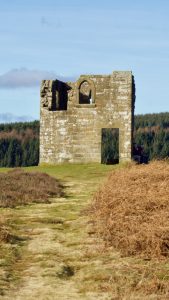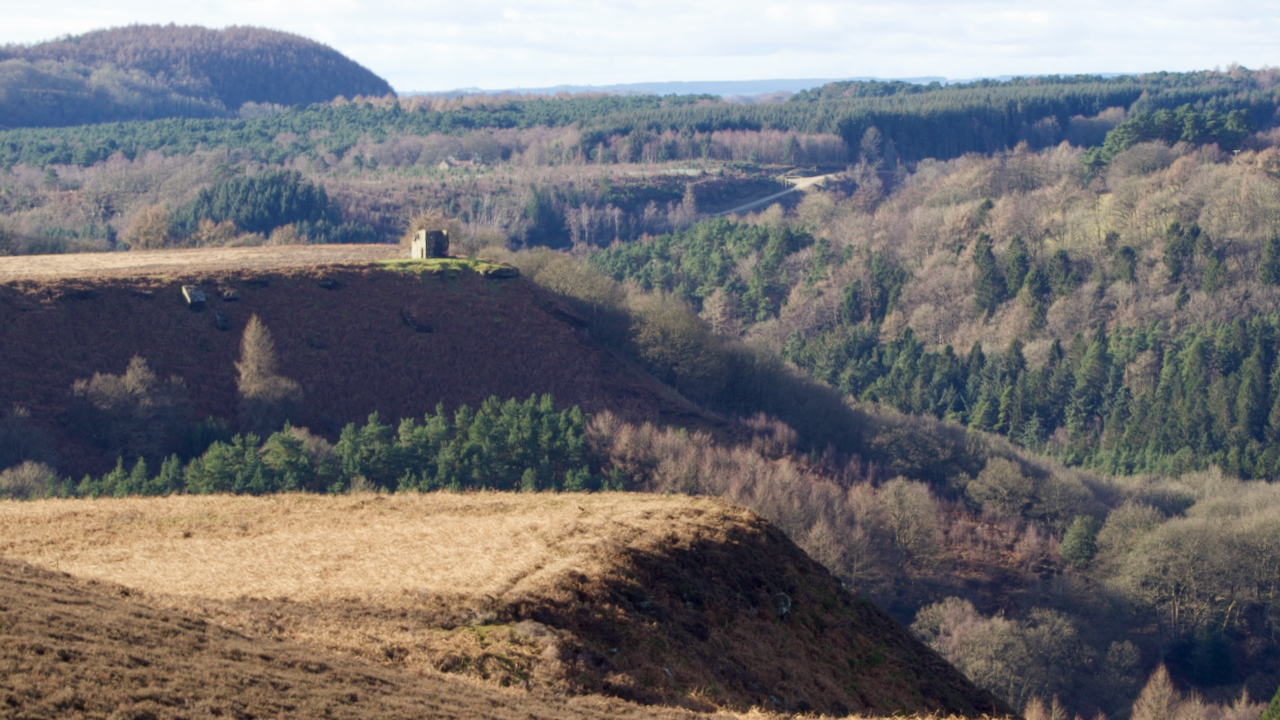
Corn Hill Point, a headland of a grassy plateau overlooking Newton Dale down which runs the North York Moors Railway.
During the times of the Napoleonic wars, the plateau was ploughed up and used for growing crops, Hence the origin of the name1‘Skelton Tower: North York Moors National Park’. 2023. North York Moors National Park <https://www.northyorkmoors.org.uk/visiting/see-and-do/attractions/skelton-tower> [accessed 11 February 2023].
Perched on the tip are the ruins of Skelton Tower, a two-storey former shooting lodge was built before the late 1840s by the former rector of Levisham, the Reverend Robert Skelton. It is said that he used the tranquility of the lodge to write his sermons but it is also alleged it was used as an escape to enjoy a quiet drink or two. The railway arrived in 1836, was this before or after the tower was built?
By 1855, Skelton was having financial difficulties. He put the Manor of Levisham into the hands of three trustees who put it up for auction, although Skelton still retained his clerical roles living locally2Marsh, Elizabeth. “Ironstone at Levisham in 19th Century”. Cleveland Industrial Archaeological Society Newsletter 124. July 2022. Page 12..
It attracted the attention of James Walker, a cloth manufacturer of Leeds, who was interested in the ironstone mineral deposites on the estate. He promptly set about prospecting for ironstone and in August 1858 the Yorkshire Gazette reported that his workmen were sinking a shaft on Levisham Moor had “at length come to a bed of first-rate ironstone”. It was hoped that the seam would be about seven feet thick and that “an extension of the famous Rosedale seam” would be found underneath it. Unfortunately for Walker this didn’t materialise and, by 1859, Walker was running short of money. In 1862. he put the mine and mineral rights, under about 2,000 acres at Levisham, up for sale along with 24 acres of surface land for an ironworks. This was not successful, and, four years later, the whole of the Manor of Levisham was auctioned.
Walker’s mine is within the conifer plantation to the north-east of the tower. Skelton died in 1877, so his retreat would have been no longer a place of tranquility.
Skelton had a son, also named Robert, born in 1829. Aged 21 he was a fee-paying student at St. Catherine’s College, Cambridge University and was described as a ‘Gentleman’ when he married in 1859. In the 1861 census, he was recorded as a “Landed Proprietor”, and in 1871 as a “School Master”. But by 1881, Robert Skelton was working as a “Furnace Weighman” in an ironworks and living at Wilton.
.
- 1‘Skelton Tower: North York Moors National Park’. 2023. North York Moors National Park <https://www.northyorkmoors.org.uk/visiting/see-and-do/attractions/skelton-tower> [accessed 11 February 2023]
- 2Marsh, Elizabeth. “Ironstone at Levisham in 19th Century”. Cleveland Industrial Archaeological Society Newsletter 124. July 2022. Page 12.

Leave a Reply